Winter Pruning Mistakes: 6 Seasonal Snipping Blunders To Avoid
Ever fallen foul of winter pruning mistakes? Learn from these seasonal mishaps and snipping fails to boost the health and longevity of trees, shrubs, crops and ornamentals

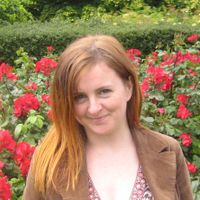
If you’ve never made any winter pruning mistakes, consider yourself one of the lucky few. Even gardening veterans and master gardeners will tell you how easy it is to accidentally make the wrong cut, at the wrong time – or not cut at all. I’ll admit it, I’ve learned the hard way that being ‘too respectful’ of living branches can be a slow road to ruin.
Playing it safe won’t necessarily encourage healthy new growth. Meekly slicing thin air, or deciding to leave it alone when I should have been going in hard – done, and done! Being too gentle is not always something your plant will thank you for. With plants, as with people, sometimes there’s no way around it, you have to be firm – just as long as you are respectful.
Even if you do have a confident grasp of pruning basics like where and how (and how much) to cut, what about exactly when? Do you know with absolute certainty when winter starts, and when it ends, for instance? And how much does timing really matter? Depending on the plant in question, it matters a great deal. But relax: there’s no shame in these mistakes.
That said, there are definitely ways to make the best of every blunder. Here, I’ve come up with the most common errors that tend to catch out the uninitiated (and yes, I’m guilty of a couple). Hopefully, sharing these cutting confessions will give you the confidence to raise your winter pruning game for happier, healthier plants. So don’t worry – be snippy.
Don’t Be Beaten By Winter Pruning Mistakes!
When assessing key winter pruning mistakes, it helps to remember why we need to prune in the first place. Removing ageing or worn-out growth is a part of it – but there are other considerations. We want to encourage fresh new growth or future crop production; maintain a pleasing, uniform shape; enable better airflow or sunlight access; and keep shrubs and trees at more manageable sizes. So there’s a lot at stake, which is why we might feel apprehensive about getting it wrong.
While we want you to avoid the biggest pruning mistakes made in winter, it’s important not to feel intimidated. Some mistakes are easy to rectify – the worst thing you can do is hold back. If you do need to make substantial cuts to larger branches, it’s ok to call in a professional arborist. For most other cuts, your motivation is making things better. With a little care and calendar savvy, these potential pitfalls could be your ticket to flourishing fruit trees, cropping plants, shrubs and landscaping plants. Be brave, think smart, and use these mistakes as guidelines for cultivating flourishing ornamentals and edibles.
1. Pruning the Wrong Plants, Shrubs and Trees
As winter pruning mistakes go, this one is big. The last thing you should be doing in winter is hacking away indiscriminately at each and every shrub and tree. For the most part, you need to think about whether each plant is still dormant – and act accordingly.
Sign up for the Gardening Know How newsletter today and receive a free copy of our e-book "How to Grow Delicious Tomatoes".
With a few exceptions, most deciduous trees are dormant in late winter and are ok to prune. However, a few deciduous trees are fussier about exactly when they are pruned in winter. Birch and maple, for example, don’t like to be pruned in late winter. And there will be tears if you prune peaches and apricots in winter at all – these trees are notoriously susceptible to silver leaf disease, which has spores that are prevalent in winter.
There are also many flowering ornamentals you shouldn’t be pruning in winter, as you could be destroying a whole season of flowering. 'Spring-flowering azalea, forsythia, dogwood and rhododendron set flower buds in the fall,’ says expert Teo Spengler. ‘Pruning in winter means you reduce their spring flower display.’ Check your plant cultivar’s pruning requirements very carefully before making that first cut.

Teo Spengler has been gardening for 30 years. She is a docent at the San Francisco Botanical Garden. Her passion is trees, 250 of which she has planted on her land in France.
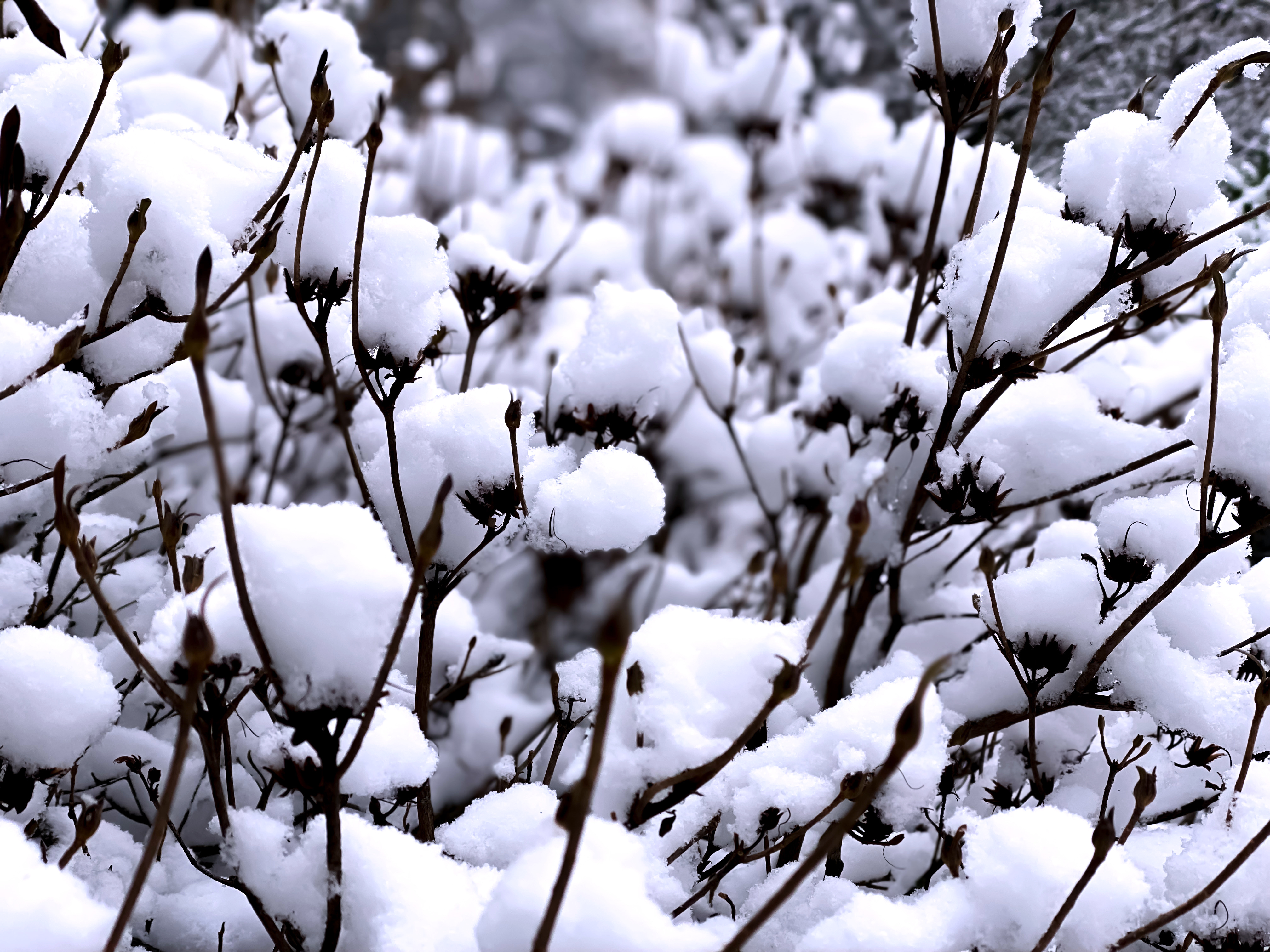
2. Pruning Too Much (or Not Enough)
It might sound paradoxical, but there are pruning perils attached to cutting too much and leaving too much behind. Confused? It really comes down to exercising control as you make your cuts. Remember, it’s easier to cut a little more than to add it back. Take your time, take breaks, step back, and keep overall shape (and factors like airflow) in mind. There’s nothing wrong with being methodical. Done slowly, ‘under-cutting’ is the one pruning mistake you can correct as soon as you see it.
As a general rule, gardening experts often talk about the ‘one third’ rule when making cuts (so no more than a third is removed in one go). If that seems a lot, I’d say somewhere between a quarter and a fifth is fine for maintaining a healthy tree. Remember that locked into healthy wood are many of the building blocks for future growth. Make sure you avoid cutting off too much of that tree’s growth source in one hit at a vulnerable time of year.
At the other extreme, tentative cuts do no good for cropping canes such as fall-fruiting raspberry plants, for example. These need cutting back hard to ground level as soon as the bush has finished fruiting (ideally in February) so they can come back at their best. To dodge these winter pruning problems, there’s a legendary gardening maxim that I think should be hanging somewhere in every backyard – look twice, cut once. Use this as your guide, and the chances are you’ll be able to find a happy medium between these two pruning extremes.
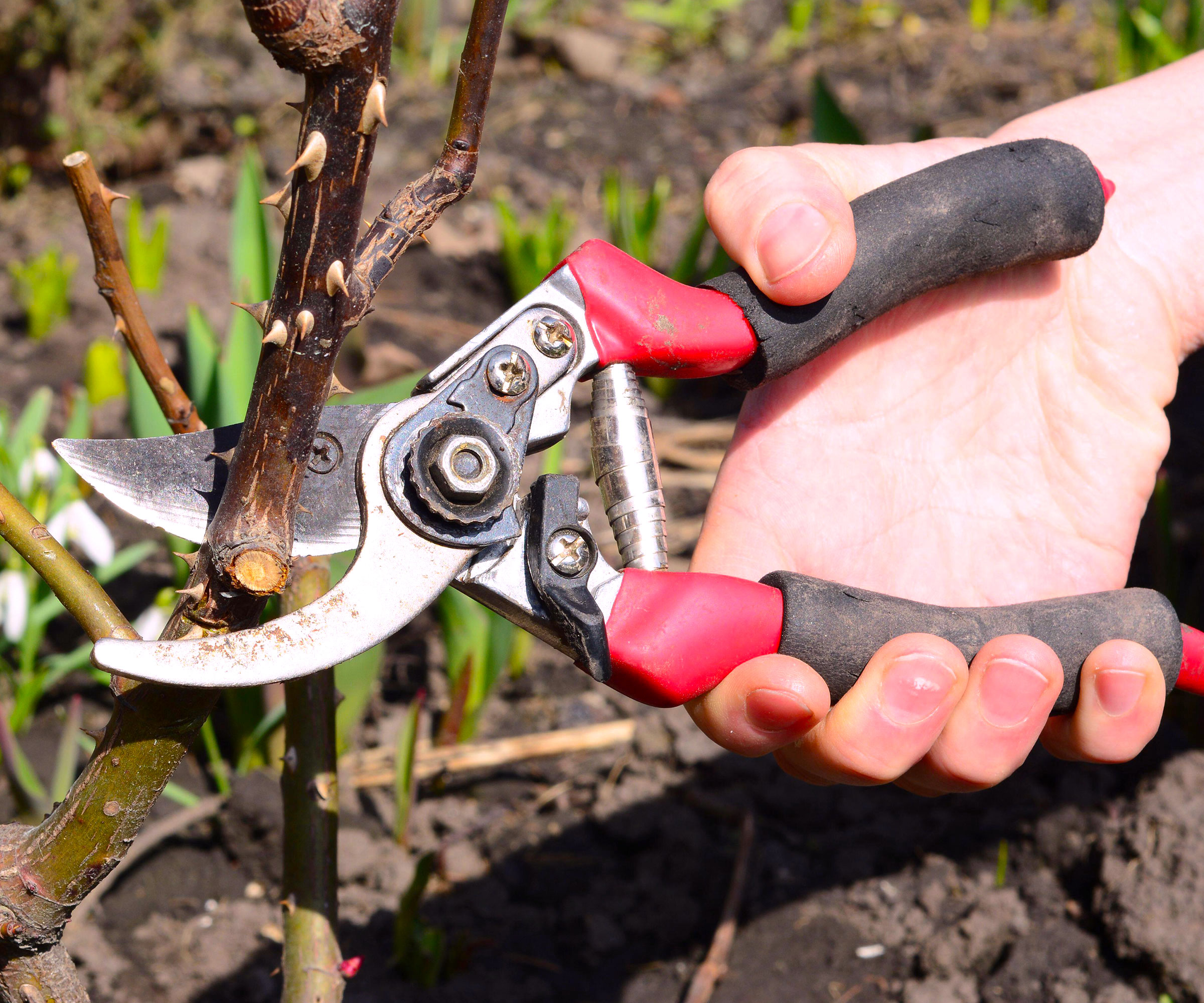
3. Pruning in the Wrong Places
In tandem with cutting too much or not enough, making cuts in the wrong place is one of the biggest winter pruning problems. Alongside the risk of uneven shaping, quite often careless and misplaced cuts can lob off essential buds which contain the following season’s flowers (and where you are growing edibles, future fruit harvests). A couple of the worst areas for cutting trees are too close to the trunk, and the tops.
Tree topping, as it is otherwise known, often occurs in an attempt to curb height. Not only can this leave trees looking misshapen, it can also compromise the integrity and health of the tree. Meanwhile, cutting too close to the trunks of trees can significantly reduce their healing powers, leaving them exposed to all manner of infections. Avoid the area close to the join (or collar).
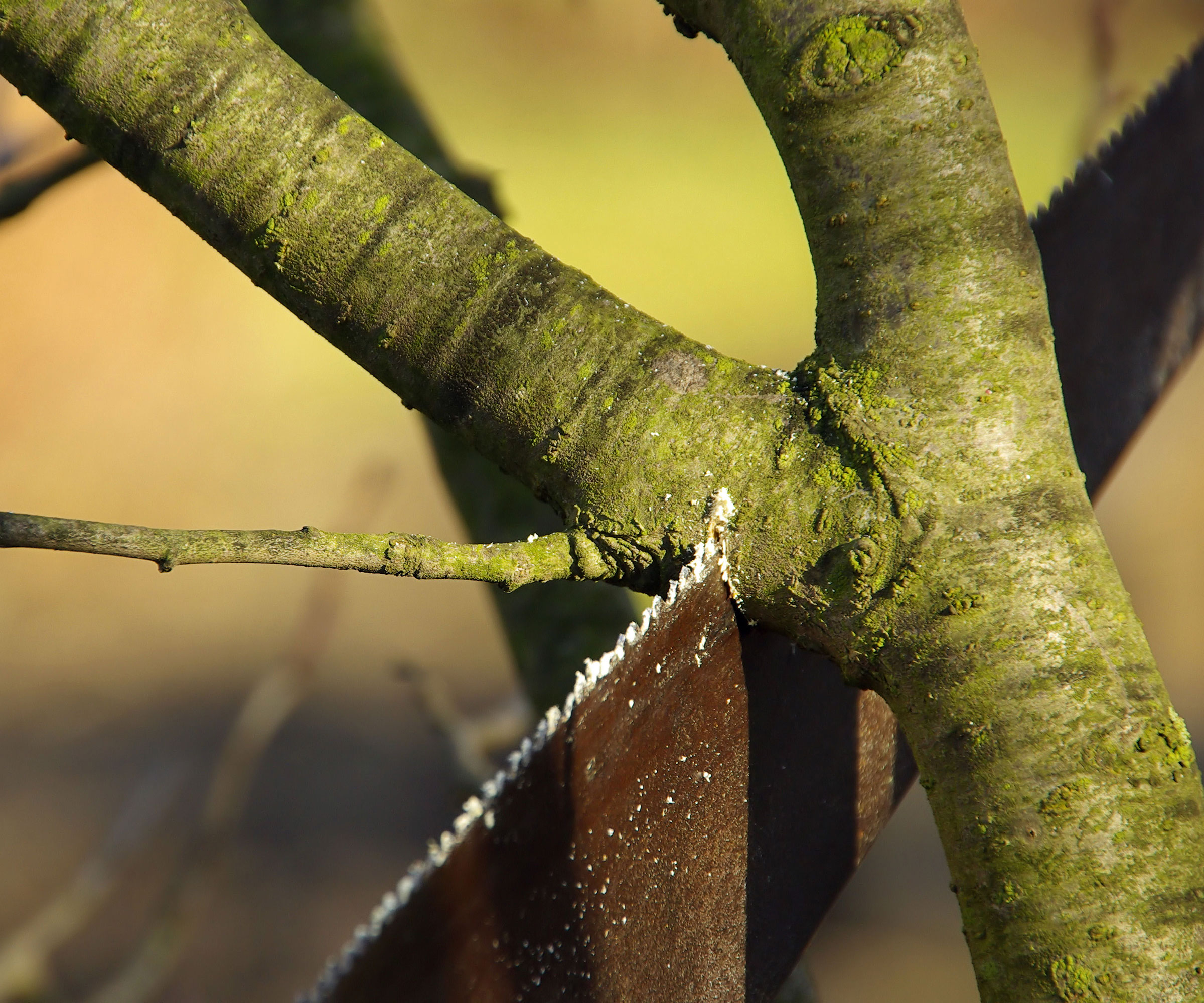
4. Going Easy on Damaged or Diseased Spots
You might think it’s obvious to make weak and vulnerable stems and branches a priority. But often, the process of clipping becomes more about the shape of the whole and less about supporting parts. The discerning pruner needs to constantly evaluate both. Pruning experts like to talk about the three Ds: dead, damaged and diseased branches. Where you do see diseased branches, cut back to healthy growth – and don’t add these prunings to your winter composting piles.
Mind you, I’d be tempted to amend this to the four Ds – with the fourth being droopiness. Winter is a good time to assess any parts of trees that seem disproportionate in terms of weight distribution. If a certain part of the tree seems to be dipping low, this will cause issues if left unchecked. It’s not just an issue for the structure of the tree or shrub: it can lead to a reduction in healthy flowering and cropping. So remove by cutting back to a horizontal branch. Even smaller shrubs like gooseberries benefit from having lower dangling stems removed. You might also want to consider extra supports or training interventions.
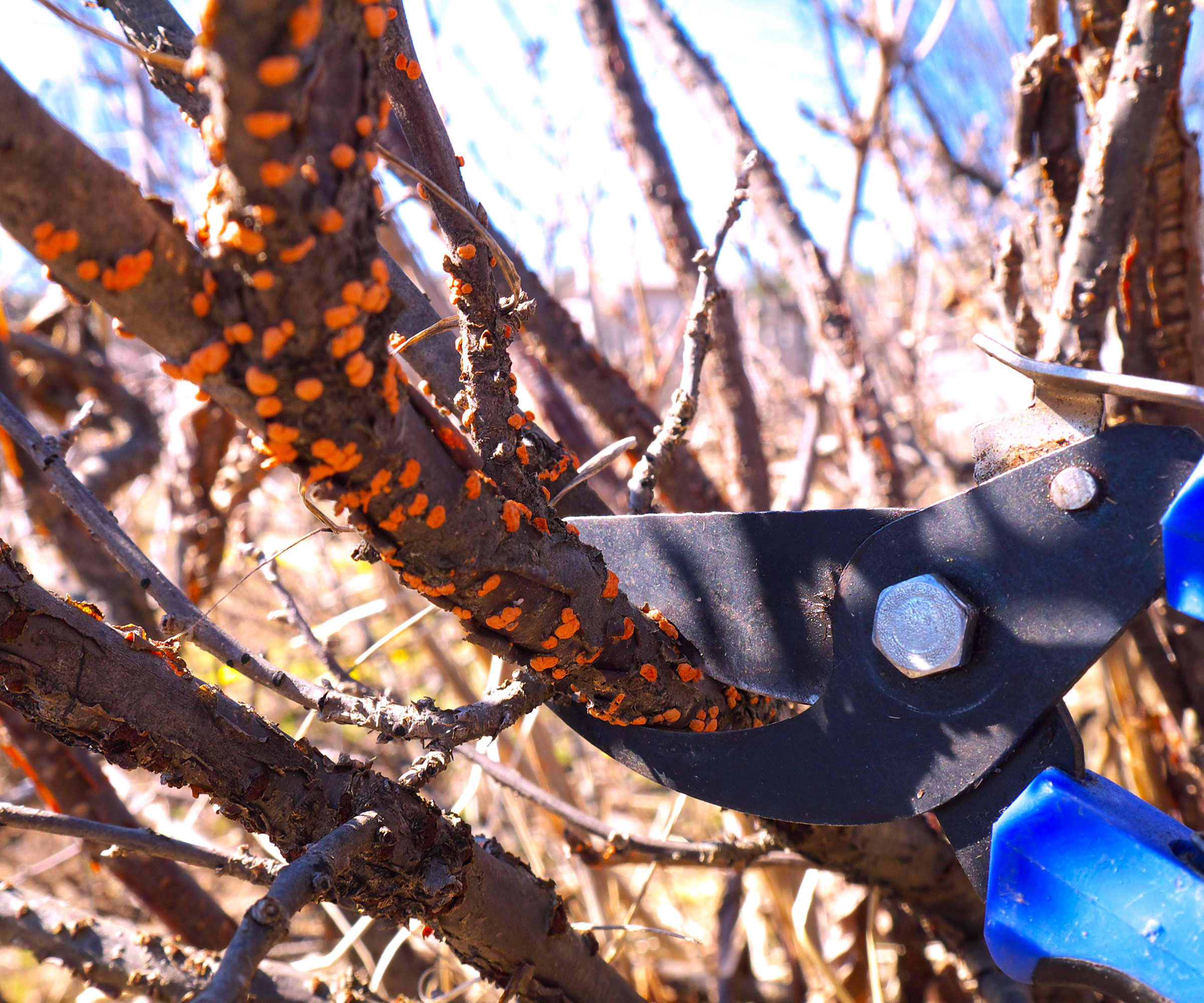
5. Deciding Not to Prune At All
Fear, apathy and procrastination may often stand between you and healthy shrubs and trees. Conversely, you might have a touch of bravado and feel tempted to give that tree or shrub a year off for good behavior. Whether you’re putting off winter-pruning trees and perennials because you imagine it’s a big job, or terrified of spoiling something that seems fine as it is, it’s easy to talk yourself out of it. What I like to call the ‘psychology of pruning’ can become one of the biggest barriers to growth.
While clumsy or overzealous pruning may seem damaging, some of the biggest winter pruning problems come down to inertia. Trying to play ‘catch up’ later is exponentially harder with shrubs like gooseberries, where thorns quickly run riot. A few years is all it takes for unpruned apples to throw up competing, criss-crossing branches that block out sunlight, reducing fruit set and encouraging fungal infections. Neglecting blackcurrant pruning means plants quickly run out of steam wherever wood is more than three years old; in this case, you need to make sure you cut the oldest wood back annually so that new, fruitful stems can flourish.

6. Not Cleaning Tools Properly After Pruning
Believe it or not, one of the biggest winter pruning mistakes happens when you stop cutting. If you place pruning saws, shears and loppers back into the shed straight after use, you’re storing up future grief. Even if you think the tools are in pristine condition, you could be passing forwards any undetected infections if you don’t sterilize pruning tools thoroughly.
The more wear and tear tools receive, the more TLC they need after pruning. Rusty tools compound the risks of infection. Couple that with any blunt edges, and you risk damaging woody stems and infecting exposed plant areas. Wipe a general-purpose disinfectant or antibacterial agent across the surface of all the blades. Steel wool scrubbers can help shift built-in dirt. As well as cleaning gardening tools, use sharpening stones to keep blades in peak cutting condition. Tool lubricants are also wise for pruning shears and loppers.

Frequently Asked Questions
What is the Latest You Can Cut in Winter?
Definitions of winter (and when it ends) can be confusing. For some, winter pruning is December – for others, it is February. Your hardiness zone may well inform your winter pruning timetable, and how much flexibility you have with final cuts. Catching a little frost isn’t necessarily ‘game over’. Trees such as apples can be pruned in low temperatures, as long as they are dormant. Above all, respect the dormancy period of the plants you are pruning and make sure winter cuts are completed in advance of bud burst.
Should You Prune Above or Below a Node?
Good pruning is generally best just above a node, which is where fresh growth (buds, leaves, etc) tends to emerge. By comparison, cutting below the node leaves parts of stems that cannot develop anything, leaving them vulnerable to rots, fungal infections and other diseases. Cutting above a node in particular places on the stem also allows you to influence the direction of growth, giving more control over the plant’s overall shape.

Janey is a former assistant editor of the UK’s oldest gardening magazine, Amateur Gardening, where she worked for five years. For the last few years, she has also been writing and editing content for digital gardening brands GardeningEtc and Homes & Gardens. She’s taken part in a range of conservation and rewilding projects for the Royal Horticultural Society (RHS) and the British Trust for Conservation Volunteers (BTCV) as a way of exploring her horticultural horizons. She is currently undertaking her RHS Level 2 certificate in The Principles of Plant Growth and Development.